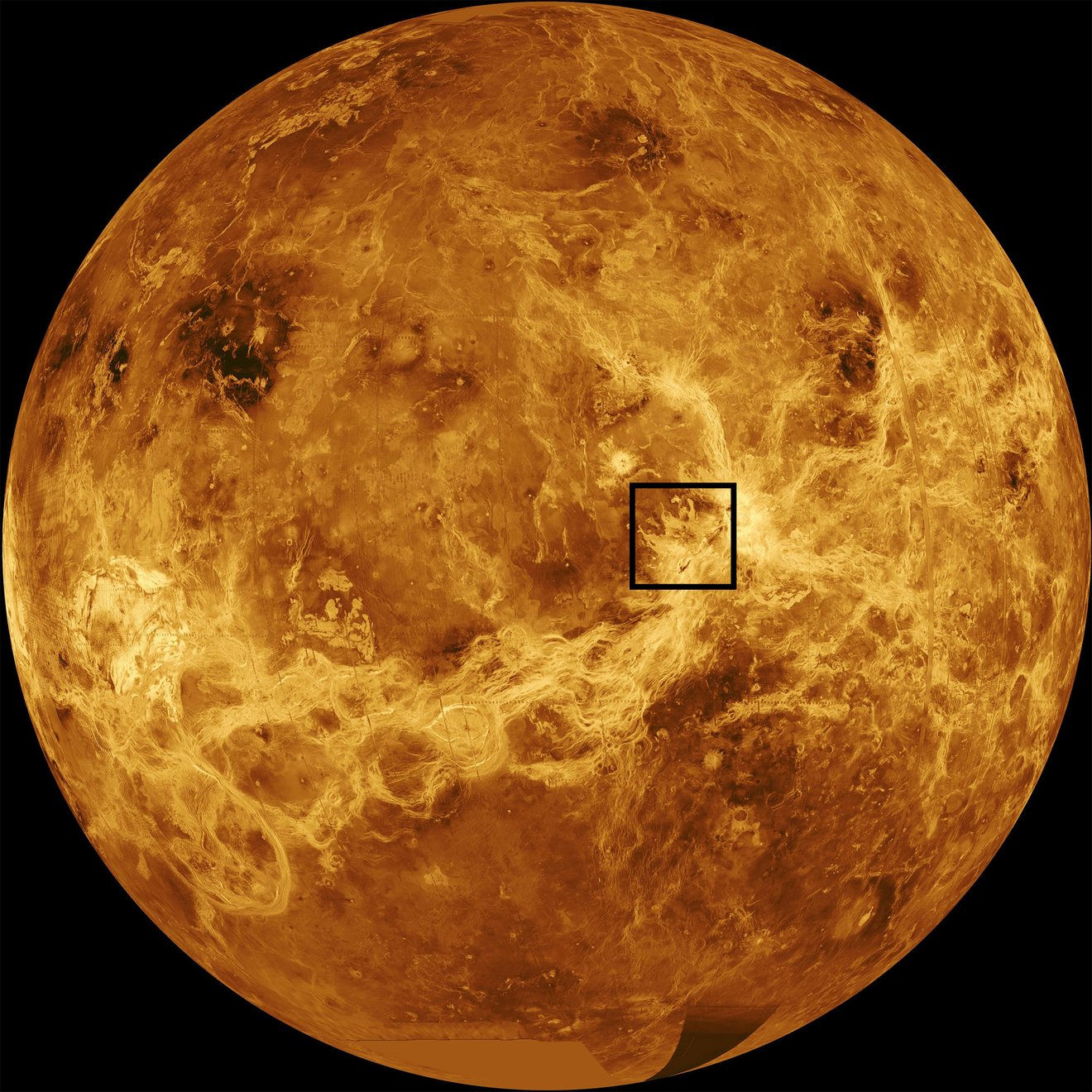In a groundbreaking discovery, scientists have found direct evidence of recent volcanic activity on Venus, Earth’s closest planetary neighbor. The finding was made using radar images captured over three decades ago by NASA’s Magellan mission in the 1990s. This revelation sets the stage for NASA’s upcoming VERITAS mission, which will further investigate Venus and its geological processes.
The radar images showed a volcanic vent on Venus changing shape and increasing significantly in size in less than a year. Scientists study active volcanoes to comprehend how a planet’s interior can shape its crust, drive its evolution, and influence its habitability. The VERITAS mission, led by NASA’s Jet Propulsion Laboratory in Southern California, aims to study Venus from surface to core to understand how the rocky planet, similar in size to Earth, developed into a world covered in volcanic plains and deformed terrain beneath a dense, hot, toxic atmosphere.
The discovery was made by Robert Herrick, a research professor at the University of Alaska Fairbanks and a member of the VERITAS science team. He spent around 200 hours manually comparing images of different Magellan orbits and identified geological changes in the Atla Regio region, which hosts two of Venus’ largest volcanoes, Ozza Mons and Maat Mons. Herrick’s findings have been published in the journal Science and were also presented at the 54th Lunar and Planetary Science Conference in Texas on March 15.
Herrick collaborated with JPL’s Scott Hensley, the project scientist for VERITAS and a specialist in analyzing radar data like Magellan’s, to create computer modelsto test various geological-event scenarios, such as landslides. The models concluded that only a volcanic eruption could have caused the observed changes. The size of the lava flow generated by the Maat Mons activity was comparable to the 2018 Kilauea eruption on the Big Island of Hawaii.
Herrick, Hensley, and the rest of the VERITAS team are eager to see how the mission’s advanced science instruments and high-resolution data will build upon Magellan’s impressive radar imagery legacy, which greatly expanded human knowledge of Venus. Jennifer Whitten, associate deputy principal investigator of VERITAS at Tulane University in New Orleans, said, “Now that we’re very sure the planet experienced a volcanic eruption only 30 years ago, this is a small preview for the incredible discoveries VERITAS will make.”

VERITAS will employ state-of-the-art synthetic aperture radar to create 3D global maps and a near-infrared spectrometer to determine the surface composition. The spacecraft will also measure Venus’ gravitational field to discern the structure of its interior. Together, these instruments will provide insights into the planet’s past and present geological processes.
Unlike the cumbersome Magellan data, VERITAS’ data will be available online for the science community, allowing researchers to apply cutting-edge techniques, such as machine learning, to analyze the planet and uncover its hidden secrets.
The VERITAS mission will be complemented by the European Space Agency’s (ESA) EnVision mission, set to launch in the early 2030s. EnVision will carry its own synthetic aperture radar (VenSAR) and a spectrometer similar to the one on VERITAS. Both Hensley and Herrick are key members of the VenSAR science team.
VERITAS and NASA’s Deep Atmosphere Venus Investigation of Noble gases, Chemistry, and Imaging (DAVINCI) mission were selected in 2021 under NASA’s Discovery Program as the agency’s next missions to Venus. The VERITAS mission partners include Lockheed Martin Space, the Italian Space Agency, the German Aerospace Center, and Centre National d’Études Spatiales in France. The Discovery Program is managed by the Planetary Missions Program Office at NASA’s Marshall Space Flight Center in Huntsville, Alabama, for the Planetary Science Division of NASA’s Science Mission Directorate in Washington.
source: jpl.nasa.gov





